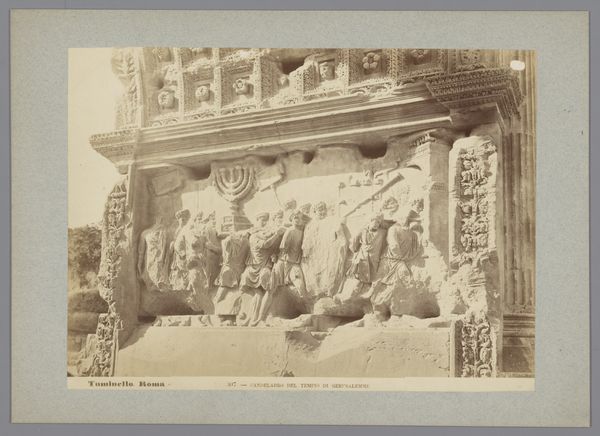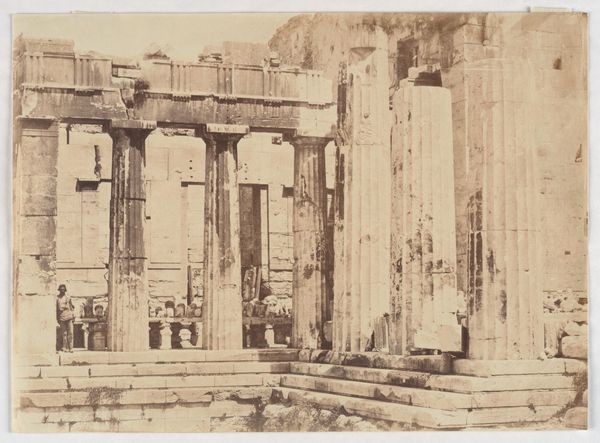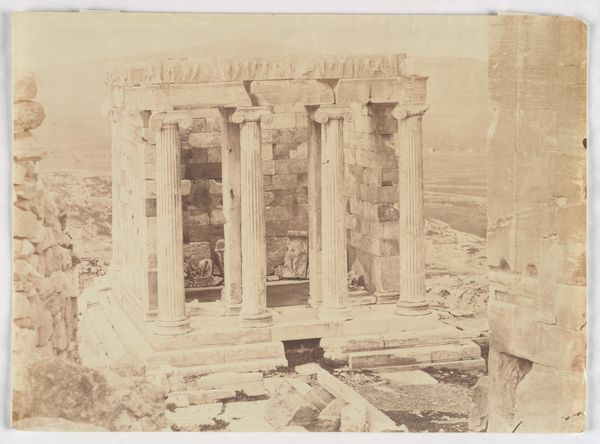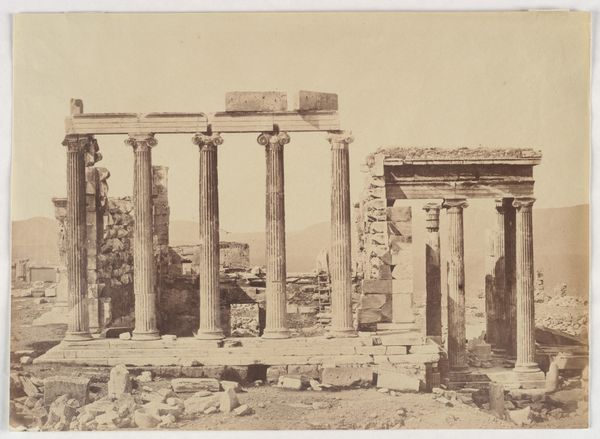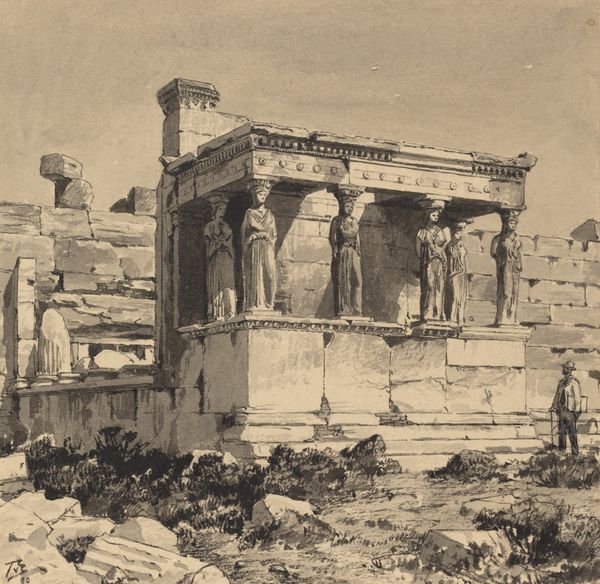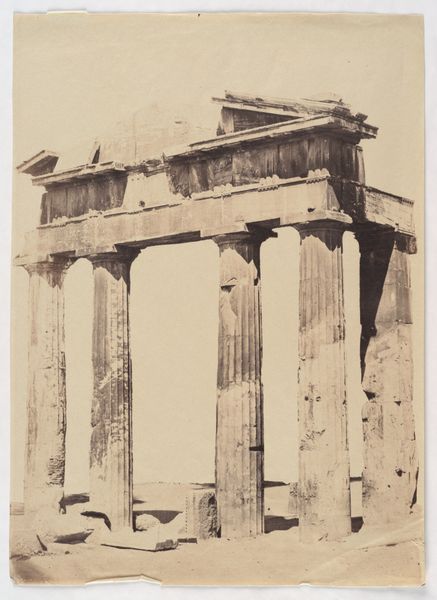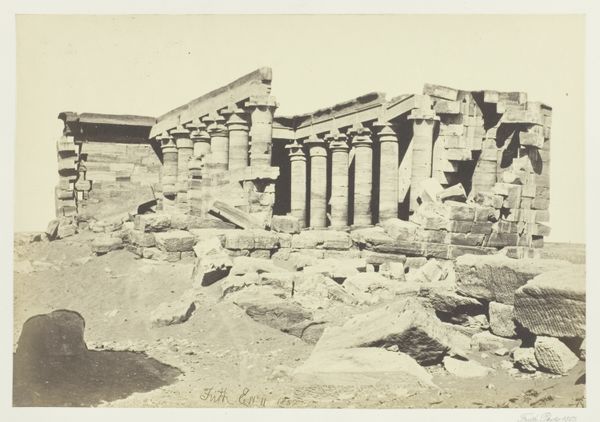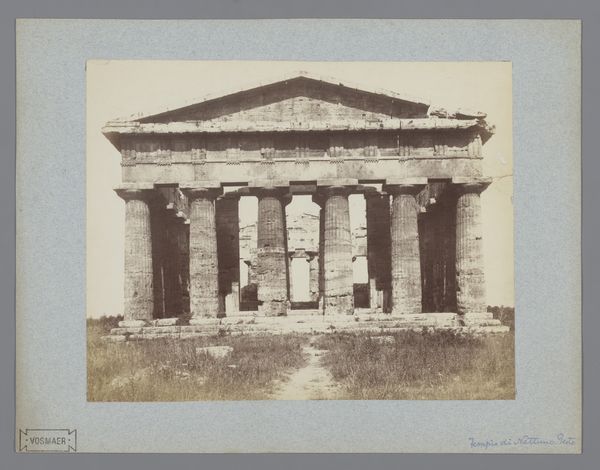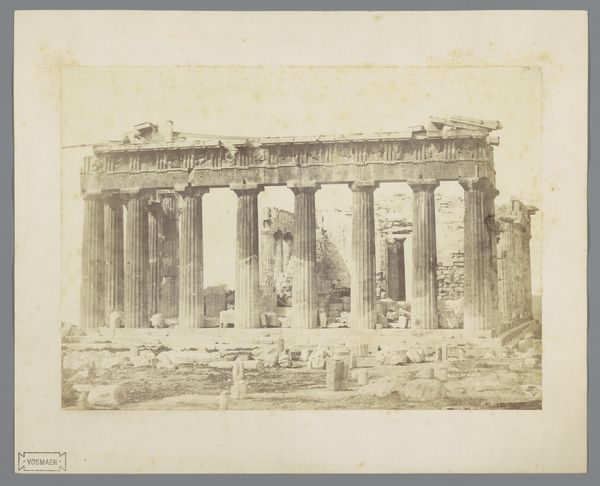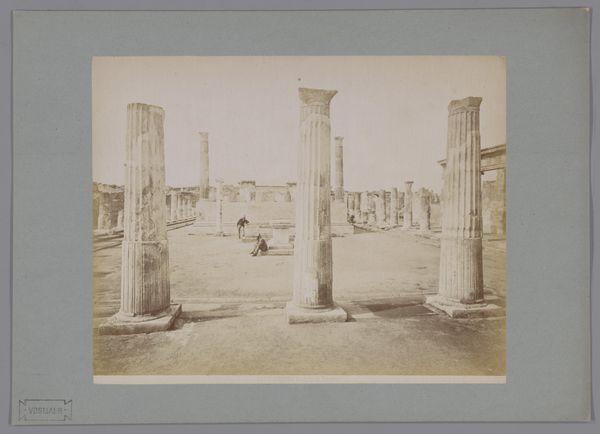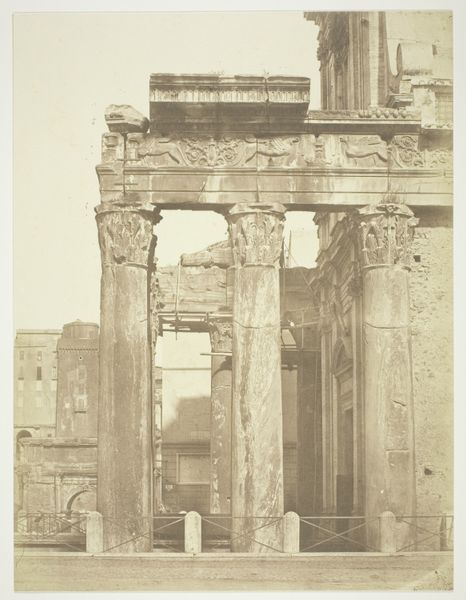![[Acropolis, Athens, Greece] by James Robertson](/_next/image?url=https%3A%2F%2Fd2w8kbdekdi1gv.cloudfront.net%2FeyJidWNrZXQiOiAiYXJ0ZXJhLWltYWdlcy1idWNrZXQiLCAia2V5IjogImFydHdvcmtzLzYxYzIyYzBjLTU3NDUtNGM4Yi1iM2MzLTM2MmRlOWJhOWM2Yi82MWMyMmMwYy01NzQ1LTRjOGItYjNjMy0zNjJkZTliYTljNmJfZnVsbC5qcGciLCAiZWRpdHMiOiB7InJlc2l6ZSI6IHsid2lkdGgiOiAxOTIwLCAiaGVpZ2h0IjogMTkyMCwgImZpdCI6ICJpbnNpZGUifX19&w=3840&q=75)
daguerreotype, photography, architecture
#
greek-and-roman-art
#
landscape
#
daguerreotype
#
photography
#
ancient-mediterranean
#
architecture
Dimensions: Approx. 11 x 15
Copyright: Public Domain
Editor: Here we have a daguerreotype by James Robertson, dating from about 1850 to 1855, of the Acropolis in Athens. It feels remarkably modern in its stark presentation, despite the ancient subject matter and aged tones of the image. What stands out to you most about this particular piece? Curator: For me, it’s the photographic process itself. Consider the labor involved in creating a daguerreotype in the mid-19th century – the preparation of the silvered copper plate, the long exposure time in the harsh Athenian sun. Robertson wasn't just capturing an image; he was engaging in a complex chemical and material process. Editor: That’s fascinating! So, you’re thinking about it in terms of the physical work that went into making it? Curator: Precisely. Think about the raw materials: silver, copper, various chemicals. And consider the social context. Who was this image made for? Was it intended as a souvenir for wealthy tourists, reinforcing a particular vision of ancient Greece? Photography at this time was an exclusive and expensive pursuit. It prompts the question, what labor underpinned that economic model? Editor: So, it’s less about the artistic skill and more about the broader circumstances? Curator: It’s about understanding how artistic skill is embedded in a web of materials, labor, and social power. What appears as a simple landscape photo, especially of canonical architecture, speaks volumes about nineteenth century class dynamics and cultural consumption. And what survives! An interesting counterpoint to ruins in architecture... ruins captured, produced, consumed, via photographic techniques and technologies of the time. How do you see that aspect of materiality influencing its reception today? Editor: I hadn’t considered all of those layers. I was focusing more on the composition, the figures… the artistic skill in capturing the monument. Now I’m realizing that the choices surrounding materials and access are so vital to consider! Thanks! Curator: Exactly. Hopefully it gives us a wider appreciation for art, beyond just aesthetics.
Comments
No comments
Be the first to comment and join the conversation on the ultimate creative platform.

